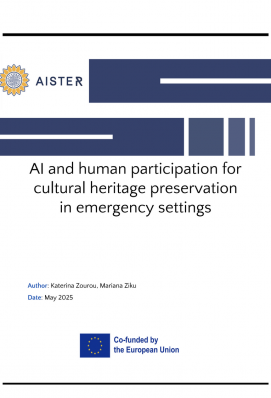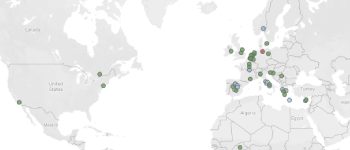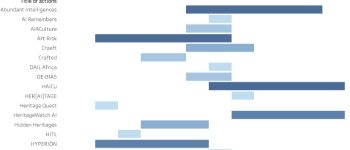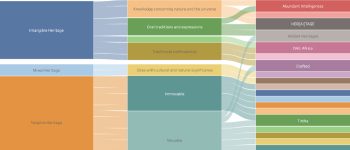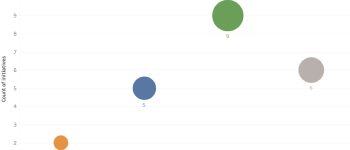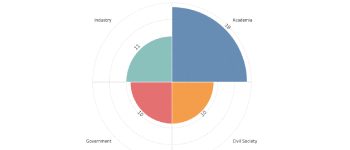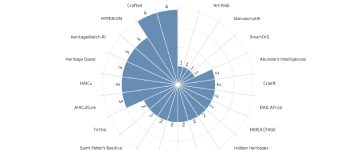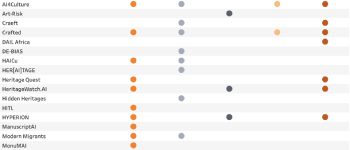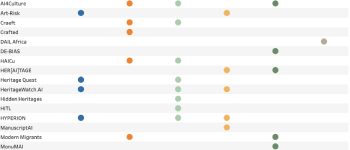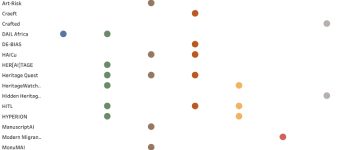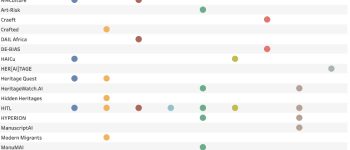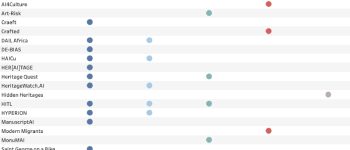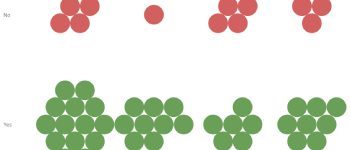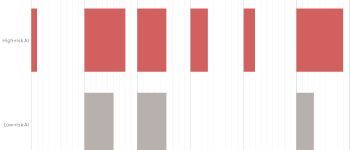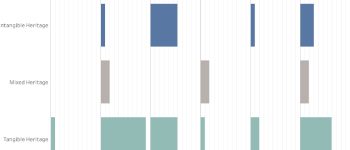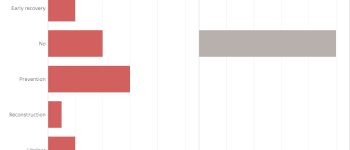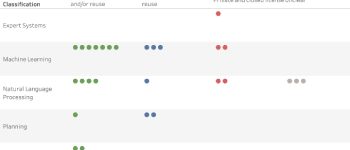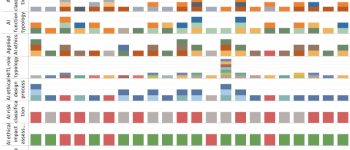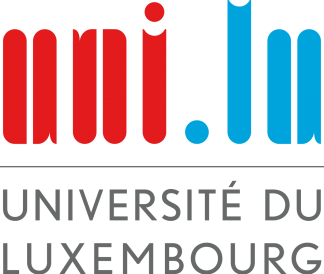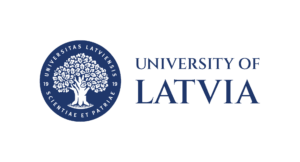
Data Analysis
Explore artificial intelligence and human participation for cultural heritage preservation in emergency settings through interactive data visualisations

The study is part of the Erasmus+ project AISTER that addresses AI-enabled Citizen Participation in University-driven Ukrainian Cultural Heritage Safeguarding
22 Cultural Heritage Preservation Projects
An international collection of 22 initiatives driving AI and citizen engagement in emergency settings
Data Analysis Study
The study collected data and conducted an international landscape analysis of AI‑enabled, participatory initiatives for safeguarding cultural heritage in emergency contexts. The study identifies several key dimensions, including levels of participation, cooperation models and types of technology, exploring patterns, correlations, and emerging directions.
Methodology workflow
A spreadsheet with 24 categorization fields was created, incorporating established typologies (e.g., citizen participation by Shirk et al.) alongside project-specific classification schemes. Project partners identified and categorized 22 related initiatives. The initial spreadsheet was processed through cleaning, transformation into machine-actionable format, pivoting, and enrichment with calculated fields. Three main quantitative data analysis approaches were applied: geographical mapping, aggregations, and cross-category filtering to derive insights. Data visualization worksheets were developed in Tableau and published with interactive elements, including tooltips and legends.
Access Report, Methodology and Dataset
Access below the report, the methodology and dataset with the collection of projects that demonstrably intersect AI, cultural heritage, and active public participation, including data visualisations and bibliography. Please cite as:
Zourou, K., Ziku, M. (2025). AI and human participation for cultural heritage preservation in emergency settings. AISTER consortium.
Visualisations at a glance
Click on thumbnail or scroll to see in detail
Spatio-temporal Representations: Geographic Distribution of Actions
Overview of initiatives and key dimensions
Faceted Data View
Insights across key dimensions


Project-Level View
Insights across key dimensions related to artificial intelligence
Combined View
Cross-Category Analysis in Key Dimensions
Data Overview
Project links and short descriptions of the 22 cultural heritage preservation projects
Task Team
Acknowledgement
With contributions from Tugce Karatas (University of Luxembourg), Sanita Reinsone (University of Latvia), Pavlo Shydlovskyi (Taras Shevchenko National University of Kyiv), and Alba Irollo (Europeana).
